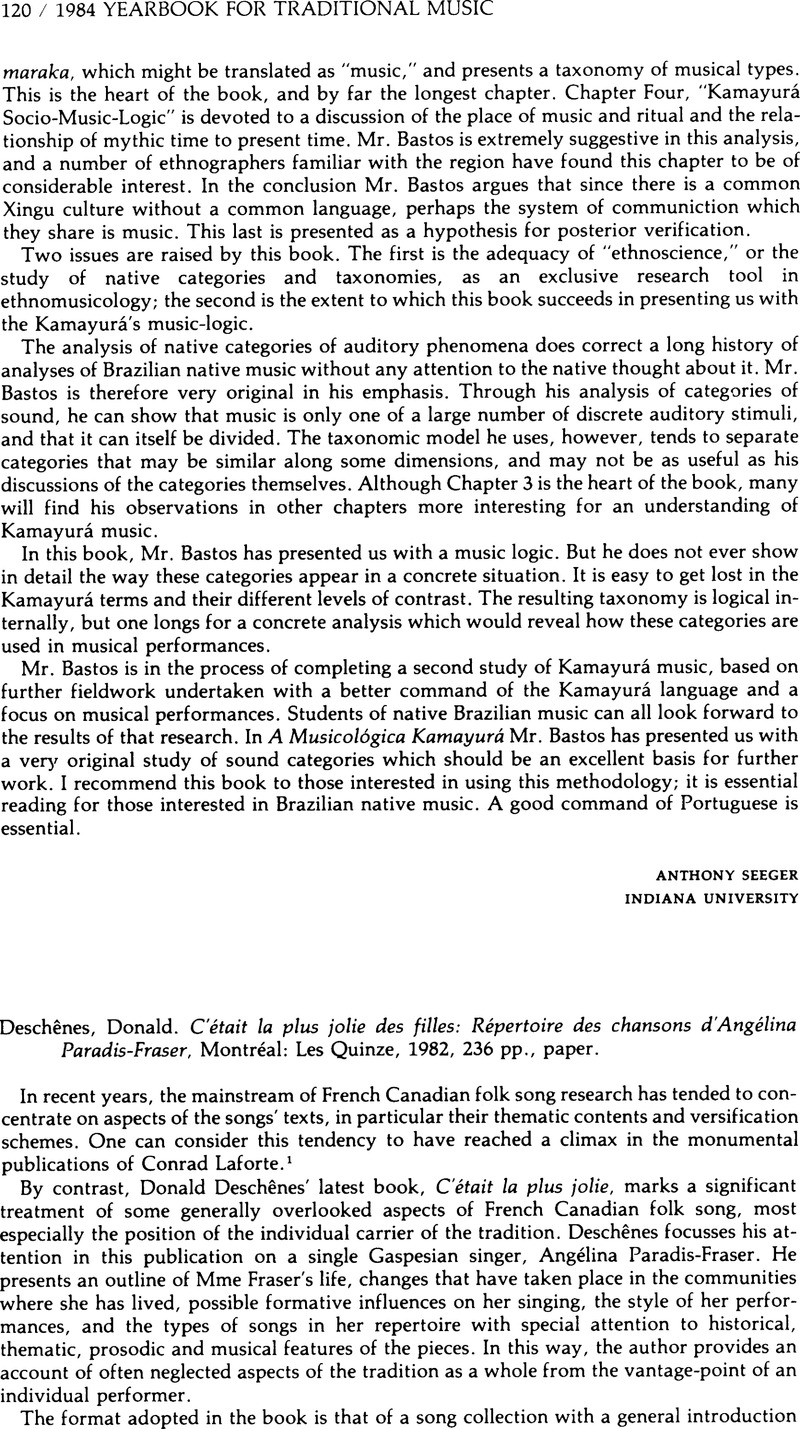No CrossRef data available.
Published online by Cambridge University Press: 07 March 2019

1. Poétiques de la chanson traditionelle française in Archives de folklore, 17, 1962; Catalogue de la chanson folklorique française, Québec, Presses universitaires Laval, 1958; Le Catalogue de la chanson folklorique française in Archives de folklore, 18–20, 1977–81; and Survivances mediévales dans la chanson folklorique. Quebec, Presses Universitaires, Laval, 1981.Google Scholar
2. Béla Bartók and Albert B. Lord, Serbo-Croatian Folk Songs, New York, Columbia University Press, 1951.Google Scholar
3. For example, the proportional relations between passages in different time signatures are unclear in songs 37, 47, 78, and 89; the tempo of song 7 is unclear (is a dot missing from the metronome indication?); to judge from the table of modes and end-notes the e-flat in the signature of song 74 should be a d-flat; and two of the measures in song 86 have extra notes in contradiction to the time signature.Google Scholar
4. Deschênes adopts a modal scheme of classification throughout; the reader should undertake a detailed comparison of Deschênes' table of modes (pp. 33–37) with the songs to which the table is keyed in order to understand his discussion of tonality.Google Scholar
5. Marguerite and Raoul d'Harcourt, Chansons folkloriques françaises au Canada, leur langue musicale, Québec, Presses universitaires Laval, 1956.Google Scholar
6. Though the book is quite free from typographical errors, the surname of Patrice Coirault, the late eminent French folk song scholar, is unaccountably rendered with an extra v in one spot (p. 30) and an extra e in another (p. 234).Google Scholar